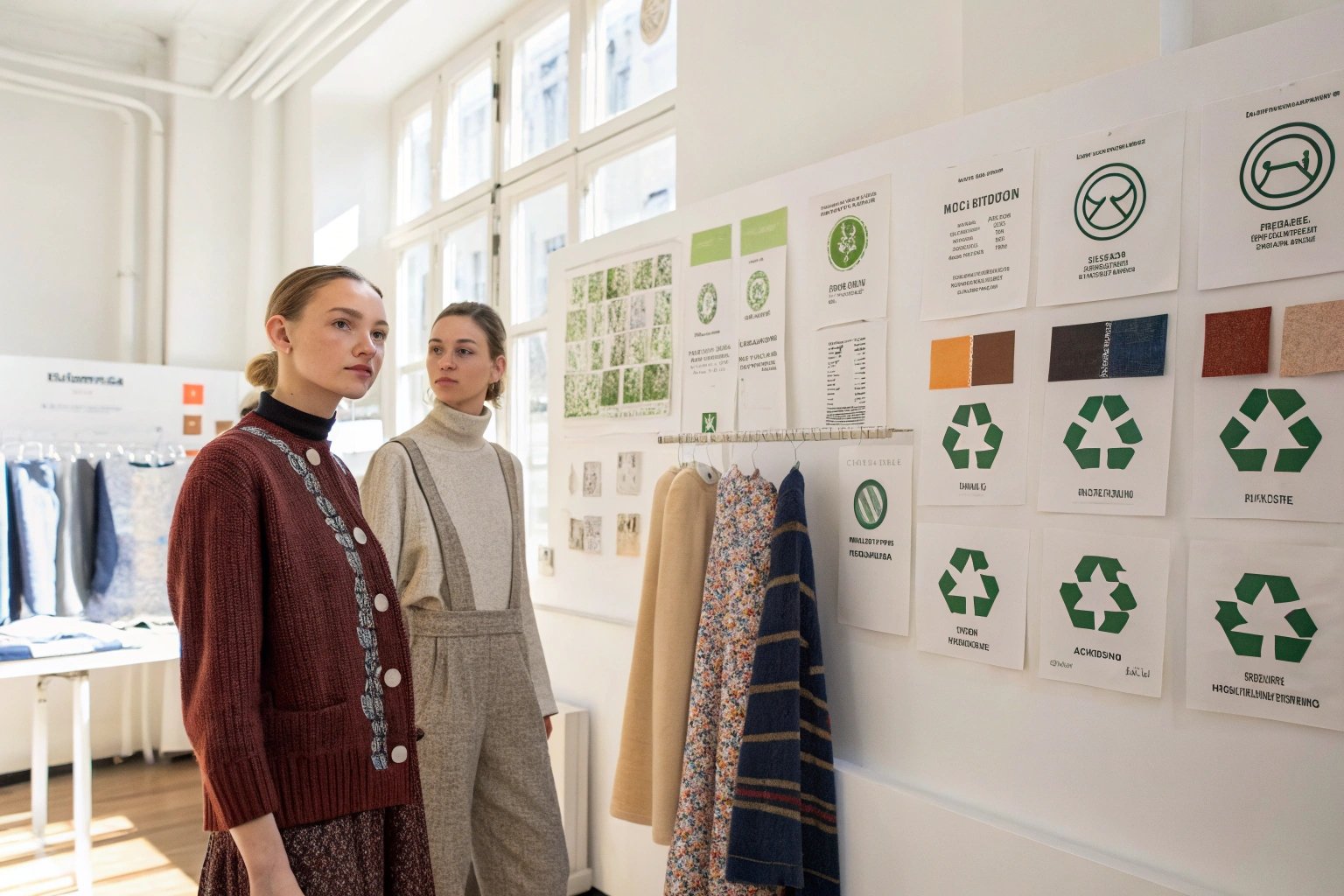Circular fashion is more than a buzzword—it’s a shift in how we make and consume clothing. I’ve watched firsthand how eco-conscious brands have turned to materials with lower environmental footprints. Among all the options, recycled wool has emerged as a surprise favorite.
Recycled wool is gaining traction in circular fashion due to its low environmental impact, durability, and alignment with sustainable brand storytelling. It reuses textile waste to create high-quality yarns and fabrics for outerwear, knitwear, and accessories.
In this article, I’ll walk you through why designers, buyers, and global apparel brands are increasingly choosing recycled wool—not just for its ethical benefits, but for its style, performance, and credibility with eco-savvy consumers.
How Is Recycled Wool Produced?
It all begins with waste. Wool offcuts from garment factories and post-consumer knits are sorted by color and quality, then shredded and respun into new yarns. The result? Fabric that looks and feels new, but carries the story of reuse.
Recycled wool is made by collecting, sorting, and mechanically processing used wool fabrics into new fiber, which is then spun into yarn and woven or knitted into textiles.
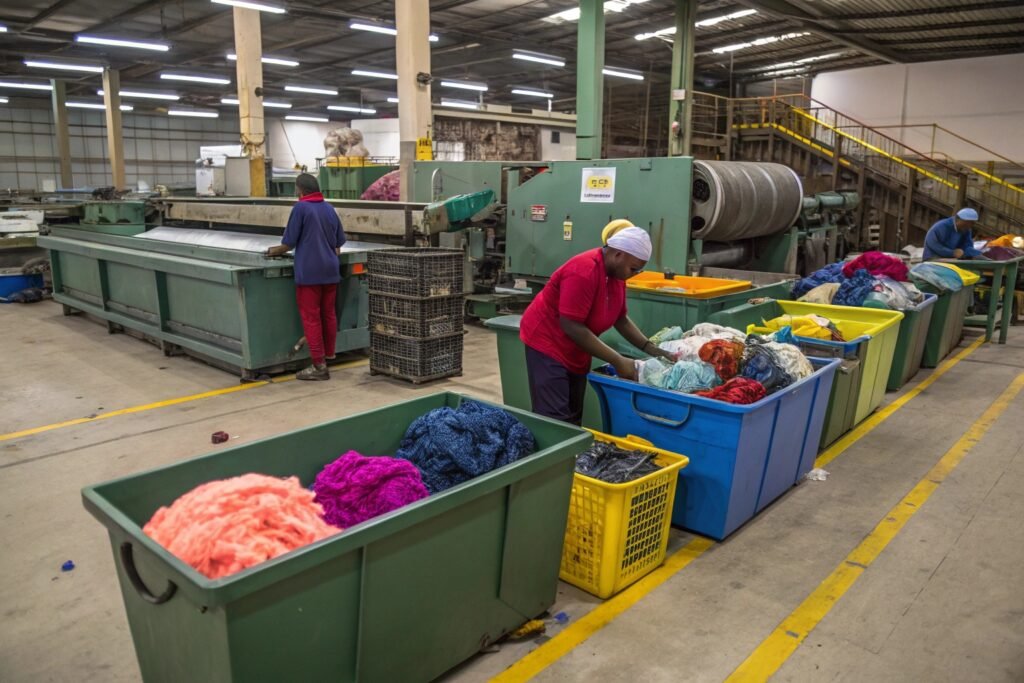
What Types of Wool Waste Are Used?
- Pre-consumer: Garment factory scraps, yarn waste
- Post-consumer: Used wool coats, sweaters, blankets
These are sorted by color, reducing the need for dyeing—an eco win. At Fumao, we work with Italian and Chinese partners who specialize in precision sorting for consistent output.
Is Mechanical Recycling Better than Chemical?
For wool, yes. Mechanical recycling preserves the fiber length better than for cotton and avoids chemical breakdown. It’s cleaner, simpler, and aligns better with circular economy principles.
| Process Step | Time Frame | Environmental Benefit |
|---|---|---|
| Sorting by Color | 1–2 days | Avoids dyeing |
| Mechanical Shredding | 1 day | No chemical use |
| Carding & Spinning | 2–3 days | Energy-efficient vs virgin wool |
What Makes Recycled Wool Eco-Friendly?
Recycled wool is one of the lowest-impact fibers available. Compared to virgin wool, it saves huge volumes of water, reduces carbon emissions, and avoids the land use and animal welfare concerns tied to new wool farming.
Recycled wool drastically cuts water usage, carbon emissions, and energy demand—making it a top choice for sustainable fashion collections.
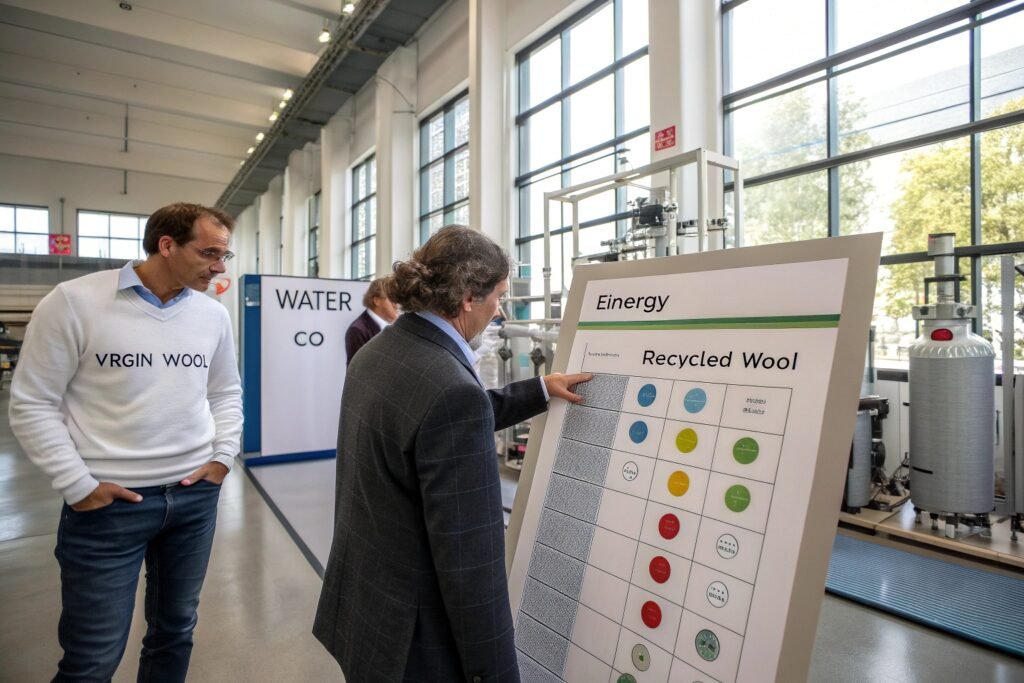
How Much Resource Does It Save?
According to industry studies, recycled wool saves up to:
- 99% water
- 90% energy
- 60% CO₂ emissions
And since it doesn’t involve sheep, it avoids methane and land-intensive grazing systems.
Are Certifications Available?
Yes. Look for GRS (Global Recycled Standard) or Recycled Claim Standard (RCS) labels. At Fumao, we help buyers get access to certified mills and include traceability QR codes for end-consumer assurance.
| Impact Factor | Virgin Wool | Recycled Wool |
|---|---|---|
| Water Use | ~8,000L/kg | <100L/kg |
| Energy Use | High (shearing, dyeing) | Low (mechanical) |
| CO₂ Emissions | High | Moderate–Low |
| Animal Impact | High | None |
What Are the Design and Performance Benefits?
It’s not just about sustainability. Recycled wool offers rich texture, deep color tones (from pre-sorted fibers), and natural thermal performance. Brands love it for outerwear, coats, scarves, and even felted applications.
Recycled wool combines eco-credibility with timeless elegance and tactile warmth—making it ideal for winterwear, statement coats, and upcycled collections.
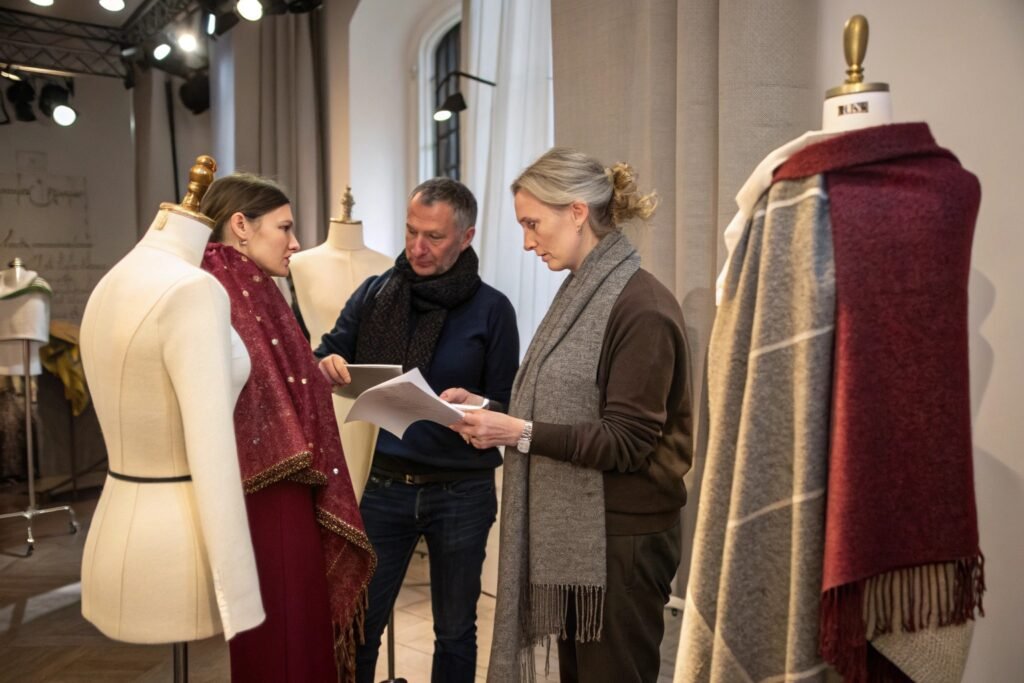
Is the Texture Different from Virgin Wool?
Slightly. Recycled wool is often blended with synthetic or virgin fibers to improve strength, since recycled fibers are slightly shorter. But it retains the softness, loft, and warmth that wool is known for.
Can It Be Custom-Dyed?
Most recycled wool is pre-colored (sorted by original shade), but some facilities offer overdyeing services. At Fumao, we offer both sorted-color and dyeable recycled wool options in 400+ GSM qualities.
| Feature | Recycled Wool | Virgin Wool |
|---|---|---|
| Texture | Slightly rougher | Softer (new fibers) |
| Warmth | High | High |
| Dye Flexibility | Medium | High |
| Custom Blending | Yes (rPET, acrylic) | Yes |
How Does It Align with Circular Fashion Goals?
Circular fashion isn’t just about recycling—it’s about designing for reuse, durability, and closed loops. Recycled wool supports this by diverting waste and allowing garments to be recycled again in future.
Recycled wool supports circular fashion by extending textile lifecycles, reducing landfill waste, and allowing brands to communicate strong sustainability messaging.
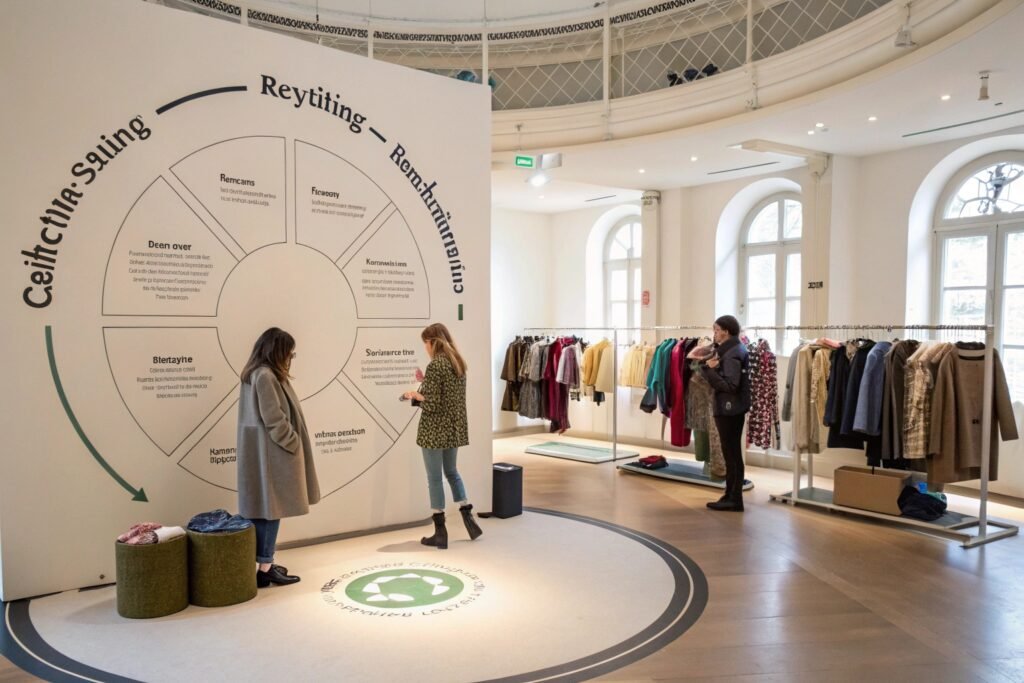
Can Recycled Wool Be Recycled Again?
Yes. In fact, many European mills specialize in multi-cycle mechanical recycling. The fibers degrade slightly each time, but with blending and reinforcement, they remain usable for non-garment applications (e.g., felt, insulation).
Why Are Consumers Responding So Well?
Consumers today want real stories. Saying “This coat was made from 3 recycled sweaters” resonates. Brands use QR-tagged labels to show the fiber’s journey. Recycled wool becomes part of your product storytelling.
| Circular Element | Recycled Wool Advantage |
|---|---|
| Material Recovery | 100% mechanical recovery |
| Waste Reduction | Diverts garments from landfill |
| Storytelling Value | High (“from sweater to coat”) |
| Second-Life Potential | Good (felt, lining, etc.) |
Conclusion
Recycled wool isn’t just a niche—it’s a movement. For brands embracing circular fashion, it’s one of the most credible, beautiful, and scalable materials available today. From cost savings on dyeing to a 90% drop in water usage, it outperforms virgin wool in nearly every sustainability metric. At Fumao Fabric, we’ve developed recycled wool lines certified under GRS and tested for consistent quality. If your brand wants to align with the future of fashion, it’s time to consider wool’s second life—done right.

